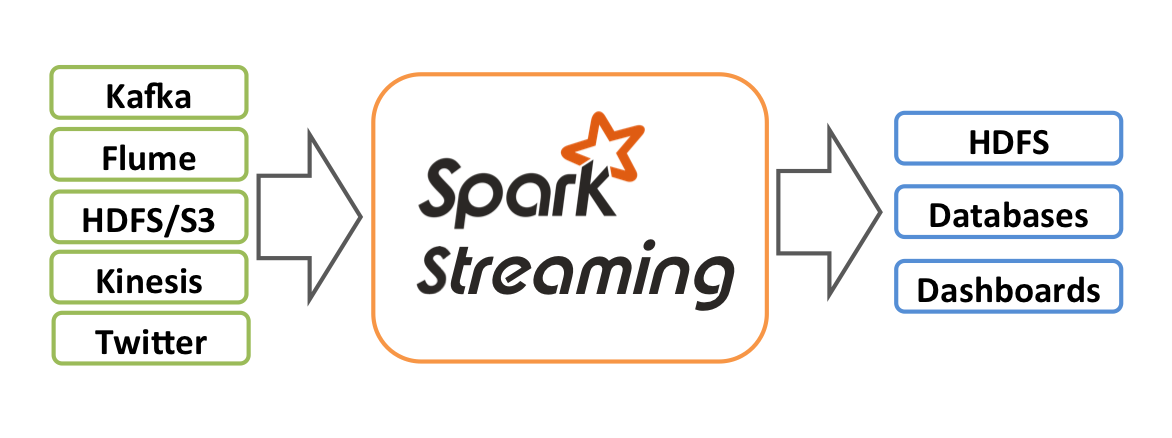Spark Streaming vs. Kafka Streaming
If event time is very relevant and latencies in the seconds range are completely unacceptable, Kafka should be your first choice. Otherwise, Spark works just fine.
Join the DZone community and get the full member experience.
Join For FreeThe demand for stream processing is increasing every day. The reason is that often, processing big volumes of data is not enough.
Data has to be processed fast so that a firm can react to changing business conditions in real time.
Stream processing is the real-time processing of data continuously and concurrently.
Streaming processing is the ideal platform to process data streams or sensor data (usually a high ratio of event throughput versus numbers of queries), whereas “complex event processing” (CEP) utilizes event-by-event processing and aggregation (for example, on potentially out-of-order events from a variety of sources, often with large numbers of rules or business logic).
We have many options to do real time processing over data — i.e Spark, Kafka Stream, Flink, Storm, etc.
In this blog, I am going to discuss the differences between Apache Spark and Kafka Stream.
Apache Spark
Apache Spark is a general framework for large-scale data processing that supports lots of different programming languages and concepts such as MapReduce, in-memory processing, stream processing, graph processing, and Machine Learning. This can also be used on top of Hadoop. Data can be ingested from many sources like Kafka, Flume, Kinesis, or TCP sockets, and can be processed using complex algorithms expressed with high-level functions like map, reduce, join and window.

Internally, it works as follows. Spark Streaming receives live input data streams and divides the data into batches, which are then processed by the Spark engine to generate the final stream of results in batches.

Spark Streaming provides a high-level abstraction called discretized stream or DStream, which represents a continuous stream of data. DStreams can be created either from input data streams from sources such as Kafka, Flume, and Kinesis, or by applying high-level operations on other DStreams. Internally, a DStream is represented as a sequence of RDDs.
Kafka Stream
Kafka Streams is a client library for processing and analyzing data stored in Kafka and either writes the resulting data back to Kafka or sends the final output to an external system. It builds upon important stream processing concepts such as properly distinguishing between event time and processing time, windowing support, and simple (yet efficient) management of application state. It is based on many concepts already contained in Kafka, such as scaling by partitioning the topics. Also, for this reason, it comes as a lightweight library that can be integrated into an application. The application can then be operated as desired — standalone, in an application server, as a Docker container, or via a resource manager such as Mesos.
Kafka Streams directly addresses a lot of the difficult problems in stream processing:
- Event-at-a-time processing (not microbatch) with millisecond latency.
- Stateful processing including distributed joins and aggregations.
- A convenient DSL.
- Windowing with out-of-order data using a DataFlow-like model.
- Distributed processing and fault-tolerance with fast failover.
- No-downtime rolling deployments.
Apache Spark can be used with Kafka to stream the data, but if you are deploying a Spark cluster for the sole purpose of this new application, that is definitely a big complexity hit.
So to overcome the complexity, kafkawe can use full-fledged stream processing framework and Kafka streams comes into the picture with the following goal.

The goal is to simplify stream processing enough to make it accessible as a mainstream application programming model for asynchronous services. It’s the first library that I know, that FULLY utilises Kafka for more than being a message broker.
Streams is built on the concept of KTables and KStreams, which helps them to provide event time processing.
Giving a processing model that is fully integrated with the core abstractions Kafka provides to reduce the total number of moving pieces in a stream architecture.
Fully integrating the idea of tables of state with streams of events and making both of these available in a single conceptual framework. Making Kafka Streams a fully embedded library with no stream processing cluster — just Kafka and your application. It also balances the processing loads as new instances of your app are added or existing ones crash. And maintains local state for tables and helps in recovering from failure.
So, what should you use?
The low latency and an easy-to-use event time support also apply to Kafka Streams. It is a rather focused library, and it’s very well-suited for certain types of tasks. That’s also why some of its design can be so optimized for how Kafka works. You don’t need to set up any kind of special Kafka Streams cluster, and there is no cluster manager. And if you need to do a simple Kafka topic-to-topic transformation, count elements by key, enrich a stream with data from another topic, or run an aggregation or only real-time processing — Kafka Streams is for you.
If event time is not relevant and latencies in the seconds range are acceptable, Spark is the first choice. It is stable and almost any type of system can be easily integrated. In addition it comes with every Hadoop distribution. Furthermore, the code used for batch applications can also be used for the streaming applications as the API is the same.
Conclusion
I believe that Kafka Streams is still best used in a "Kafka > Kafka" context, while Spark Streaming could be used for a "Kafka > Database" or "Kafka > Data science model" type of context.
Hope that this blog is helpful for you.
References
Published at DZone with permission of Mahesh Chand Kandpal, DZone MVB. See the original article here.
Opinions expressed by DZone contributors are their own.

Comments